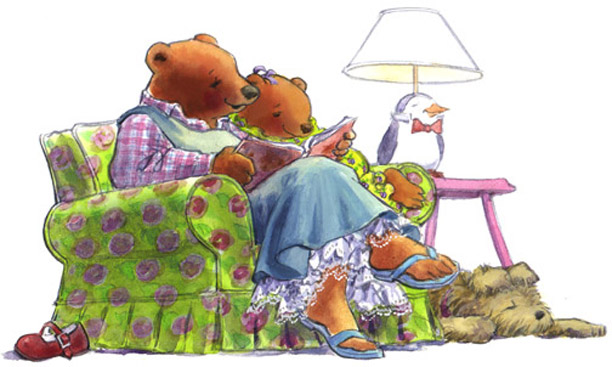Welcome to Day #1 of the “Sticks ‘n’ Stones” Blog Tour
To
celebrate the release of “Sticks ‘n’ Stones ‘n’
Dinosaur Bones,” written by Ted Enik and illustrated by G.F. Newland, blogs
across the web are featuring exclusive content about this humorous tall tale
and giving away chances to win a copy of “Sticks ‘n’ Stones ‘n’ Dinosaur
Bones.”
Sticks ‘n’ Stones ‘n’ Dinosaur Bones:
Being a Whimsical ‘Take’ on a (pre)Historical Event
Written by Ted Enik and illustrated by G.F.
Newland
Schiffer Publishing, Philadelphia, and
Pixel Mouse House, New York, September 2017
“I’ll tell you a story – and some of It’s
true – that explores and explains what the Bone Hunters do.” So begins this
story about a feud between two paleontologists during America’s Gilded Age in
the 1870s and ‘80s.
The story is told in a rollicking rhyme
with lots of humor, and is reminiscent of Dr. Seuss in its writing style and
sense of fun. It is about the frenzied competition to find dinosaur bones that
grew between Edward Drinker Cope of the Academy of Natural Sciences,
Philadelphia, and O. Charles Marsh of the Peabody Museum of Natural History at
Yale University, New Haven, CT.
“Each paleontologist used
less-than-ethical methods to outdo the other – lying, stealing, blackmail, even
destroying fossils,” writes Enik in a prologue. “Both obsessed and vengeful men
attacked each other in professional journals as well as in newspapers targeted
at the general public, in an all-out attempt to ruin his rival’s credibility
and have his funding withdrawn.”
Enik is a master of rhyme and rhythm. A
Goodreads reviewer said she found herself nearly singing when she read the book
aloud to her daughter.
The story begins:
“Wrinkled professors from northeastern
colleges/ saw there was room to expand certain knowledges.”
“Edward D. Cope was the man that School
“A” / felt was perfectly suited for digging away!
“O. Charles Marsh represented School “B.” /
Who could think of no Bone Hunter better than he!”
“If any bone promised a glimmer of glory, /
a scout set about telegraphing the story
To big city newspapers – holding their
deadlines -- /and poised to report it in EXTRA LARGE headlines.”
Before long, both paleontologists decide
to stoop to less ethical means of winning the most accolades.
“To heck with science,” Marsh hissed to
his shovel, / Outshining my rival’s the goal, far above all.
“It’s much more important to outdo my foe,
/ and if fibbing comes into it, who’s going to know?”
Both men spread rumors that they found
something far greater than any bones so far discovered. Each gathers crowds and
crows about their amazing discoveries.
“Behold!” bellowed Cope/ like a one-person
chorus. / An animal never on Earth seen before!!!!
His opponent Marsh tries to one-up him:
“Exclaiming, ‘Good People, look here!
Feast your eyes! / What I’m holding before you – though tiny in size—
“Is by far-and-away, of the hundreds I’ve found,
/ quite the topmost dead treasure I took from the ground!”
Despite the scientists’ raving
superlatives, their audiences see through their insincere claims.
“Like that! The Bone Hunters were fired,
and broke. / Where once they were famous they now were a joke.
“And why not/ They were phonies/ and Bone
Buccaneers
“Who swindled their sponsors and spoiled
their careers.”
Regardless of their childish competition,
these two scientists each discovered the bones of many dinosaurs and the two of
them were responsible for the flowering of the science of paleontology, Enik writes.
Marsh discovered and named the Allosaurus,
the Apatosaurus (originally named Bronotosaurus), the Diplodocus, the
Stegosaurus, and the Triceratops. Cope discovered and named the Camarasaurus,
the Coelophysis, and the Dimetrodon. He named the Elasmosaurus, which was
discovered by another paleontologist, Dr. Theophilus Turner.
G.F. Newland’s illustrations are charming,
stylistic, and colorful, and keep the story moving at a gingerly pace. Their
old-fashioned look suits the historical subject.
This is the second time “Sticks ‘n’ Stones
‘n’ Dinosaur Bones” is being published, now by Schiffer Publishing,
Philadelphia, with Pixel Mouse House, New York, and available in
hardcover. It was originally published
in 2013 by Pixel Mouse House and was selected as a Finalist for American Book
Fest’s 2014 Best Children’s Nonfiction and a Finalist for American Book Fest’s
2014 International Book Award for Best Children’s Nonfiction. It is an Unhinged History Book, the first in
a Seuss-inspired series about history and science that Ted is writing and
Newland is illustrating for children.
About
the Author
Ted
Enik has
worked as an illustrator for most of the well-known New York publishing houses,
applying his versatility to both original art as well as classic and current
children’s book characters, including the Magic School Bus, the Eloise books,
and the popular “Fancy Nancy I Can Read” series. This is the first picture book
Ted has authored. It was first published in 2013 by Pixel Mouse House, New
York, and honored as a Finalist in the American Book Fest’s 2014 Best
Children’s Nonfiction and a Finalist in American Book Fest’s 2014 International
Book Award for Best Children’s Nonfiction. Learn more about his books at unhingedhistory.com
and his illustration at tedenik.com.
About
the Illustrator
Schedule of Blog Tour
November 6: Can
You Read Me a Story?
November 7: A
Fuse #8 Production
November 8:
Books
My Kids Read
November 9: Rockin'
Book Reviews
November 10: Kid
Lit 411
November 11: Shelf
Employed
November 12: Frog on a Blog






































